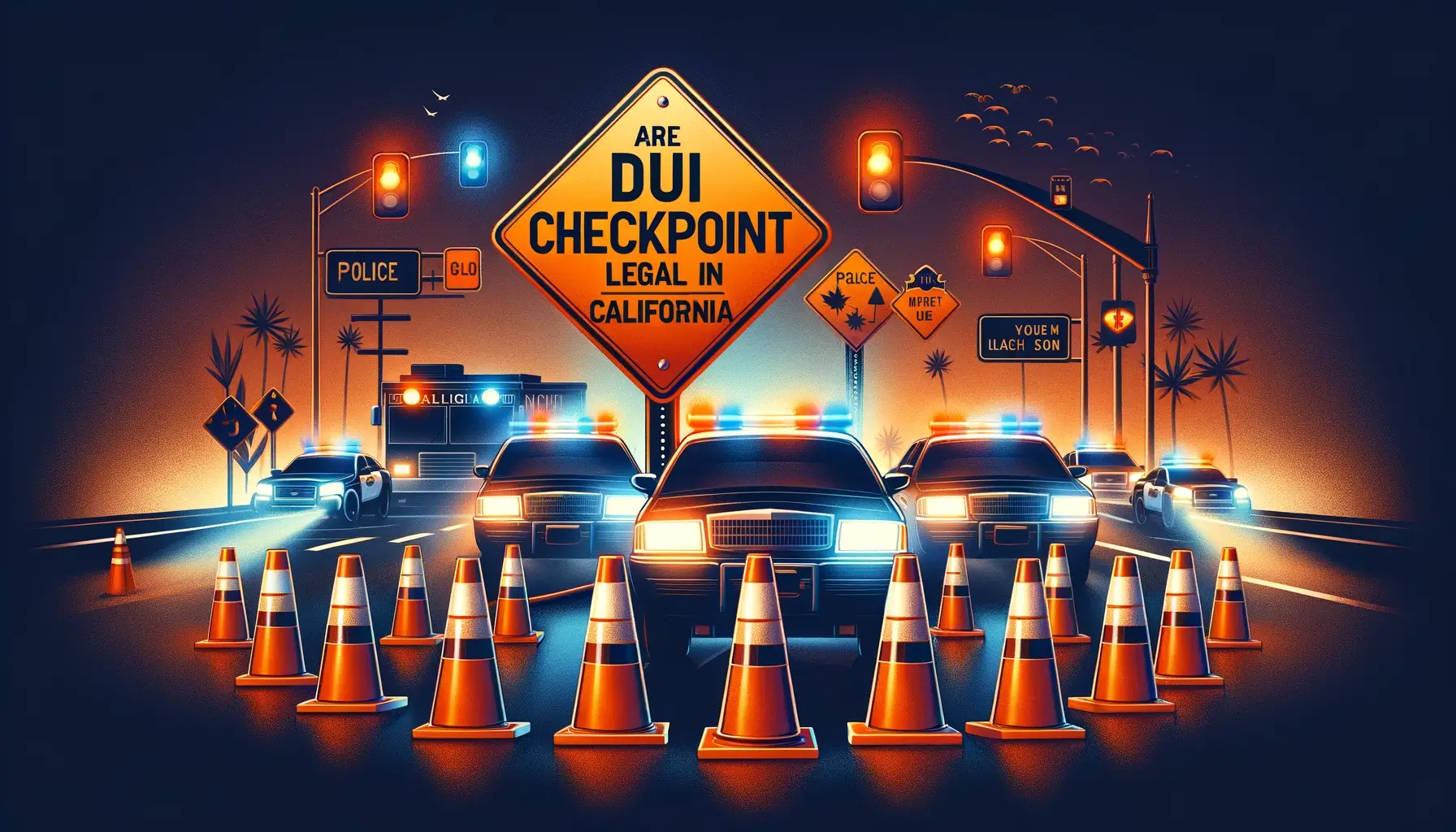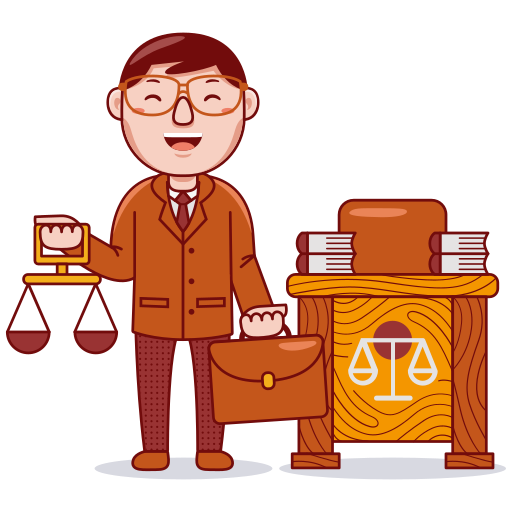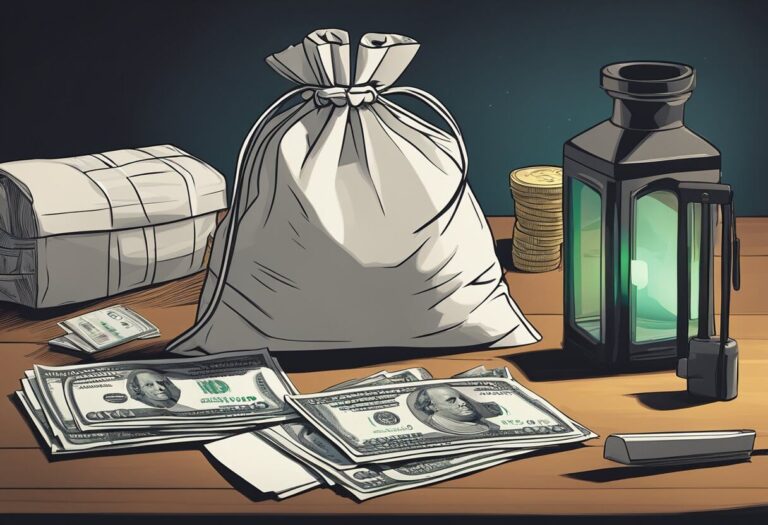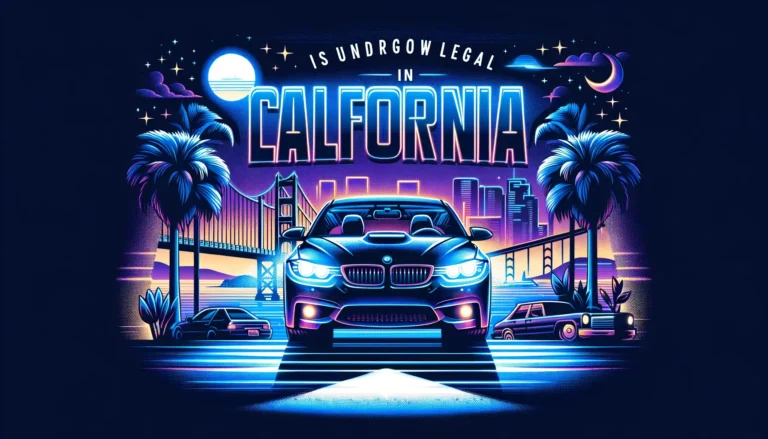Are DUI Checkpoints Legal in California? The Full Guide

If you’ve ever encountered or worry about running into a DUI checkpoint, you’re not alone. Many drivers have concerns about these sobriety roadblocks – are they legal? What are your rights? This comprehensive guide answers the biggest question upfront: yes, DUI checkpoints are legal in California but with very specific rules and regulations they must follow.
Getting stopped at a checkpoint can be nerve-wracking, even if you haven’t been drinking. Understanding the laws and procedures around DUI checkpoints in California allows you to know what to expect and how to properly exercise your rights.
In this detailed guide, we’ll cover all aspects of California DUI checkpoint legality, including:
- What DUI checkpoints are and how they operate
- The legal requirements for valid checkpoints in California
- What typically happens when stopped at a checkpoint
- If and how you can legally avoid a DUI checkpoint
- Knowing your rights when going through a sobriety checkpoint
- Potential charges for driving without a license or refusing to stop
- Challenging an arrest from an improperly conducted checkpoint
- Examples of recent checkpoints and their results across California
- How to find out about upcoming DUI checkpoints in your area
So buckle up as we take an in-depth look at this often confusing but important topic. Whether you’re a long-time driver or getting your first license, understanding California’s DUI checkpoint laws is crucial knowledge for the road ahead.
What are DUI Checkpoints?
A DUI checkpoint, also called a sobriety or drunk driving checkpoint, is a temporary roadblock where law enforcement officers stop vehicles to check drivers for potential impairment.
The primary purpose is to detect and remove intoxicated drivers from the roads, making the streets safer for everyone. Checkpoints are mostly set up during nighttime hours on weekends and holidays when drunk driving incidents spike.
At a DUI checkpoint in California, drivers are stopped and must show their license and registration. Officers look for signs of alcohol/drug impairment through brief questioning and observation.
If an officer suspects a driver is under the influence, they may be asked to take a field sobriety test (FST) such as walking in a straight line or a preliminary alcohol screening (PAS) breathalyzer test. Further testing and potential arrest can follow from the results.
While inconvenient, the goal of DUI checkpoints is understandable – getting impaired drivers off the road before they cause tragic accidents. But are these sobriety roadblocks actually legal under California law?
The Legality of DUI Checkpoints in California
Yes, DUI checkpoints are considered legal and permissible in California according to rulings by both the state Supreme Court and U.S. Supreme Court. However, law enforcement must follow strict guidelines and requirements for checkpoints to be constitutional.
In the 1987 case Ingersoll v. Palmer, the California Supreme Court laid out specific guidelines that all DUI checkpoints must meet:
Neutral Criteria for Stopping Vehicles
Rather than randomly stopping cars, a neutral mathematical formula must be followed such as stopping every 3rd or 5th vehicle. Officers cannot selectively stop only certain car makes/models or drivers of particular age/race.
Proper Location with High DUI Incidents
Checkpoints can only be set up in locations that have a documented high rate of DUI-related crashes and arrests. Areas are chosen based on data, not an officer’s subjective decision.
Adequate Safety Precautions
From traffic patterns to adequate lighting and signage, checkpoints must be established with thorough safety precautions to protect officers and drivers.
Reasonable Time and Duration
Supervising officers must determine the timing and length of checkpoints using “good judgment” to balance effectiveness with minimizing inconvenience to drivers.
Clear Official Nature with Signage
Through signs, flashing lights, marked police cars, and uniformed officers, checkpoints must be clearly identifiable as an official, lawful police inspection.
Limited Detention Time
Drivers should only be detained long enough for the officer to briefly question them and look for obvious impairment signs. There must be probable cause for any prolonged detention.
Advance Public Advertising
While not strictly required, law enforcement should ideally publicize DUI checkpoints to the public in advance through official channels.
As long as these guidelines from the Ingersoll case are followed, the California Supreme Court deemed DUI checkpoints a legal exception to the usual requirement for individualized suspicion before stops.
The U.S. Supreme Court reached a similar conclusion in 1990, ruling in Michigan Department of State Police v. Sitz that “sobriety checkpoints” are constitutional as minimal intrusions on drivers when carried out properly.
What to Expect When Stopped at a Checkpoint
So what actually happens when you roll up to a DUI checkpoint in California? Despite common worries, the process is straightforward if you are sober.
As you approach the checkpoint area, officers will direct you to merge into a designated traffic lane. Once at the front, you’ll be asked to roll down your window.
The first thing an officer will request is to see your driver’s license and registration. While doing so, they will likely attempt to engage you in brief conversation.
This allows the officer to observe for any Signs of potential alcohol/drug impairment, including:
- Slurred speech or delayed responses
- Strong odor of alcohol or marijuana
- Bloodshot or watery eyes
- Fidgety movements or confusion
- Open alcohol containers or drugs in plain sight
If the officer notices no signs of impairment during this short interaction, you’ll be allowed to proceed without further delay.
However, if the officer does suspect you may be driving under the influence based on your behavior, appearance, or admissions, they can request you pull over for further evaluation.
At this point, you may be asked to participate in standardized field sobriety tests (SFSTs) like:
- The one-leg stand
- Walk-and-turn in a straight line
- Follow a light or pen with your eyes (HGN test)
A preliminary alcohol screening (PAS) with a handheld breathalyzer may also be conducted. If you fail these tests or have a blood alcohol concentration over the legal limit of 0.08%, you will likely be arrested on suspicion of DUI.
This is the typical sequence at a California DUI checkpoint for the vast majority of sober, compliant drivers. Official signage and instructions should make it a relatively quick process if you’re not impaired.
But what if you want to avoid a checkpoint altogether? Are you required to go through it?
Can You Legally Avoid a DUI Checkpoint?
According to California law, it is legal for drivers to turn around or take another route to intentionally avoid an upcoming DUI checkpoint if they can do so safely and legally.
The California Vehicle Code does not prohibit avoiding sobriety checkpoints as long as no traffic violations occur in the process, such as an illegal U-turn or driving onto a median strip.
Law enforcement must also provide sufficient notice and signage in advance of the checkpoint location to allow vehicles a chance to turn around using proper traffic maneuvers if desired.
However, simply turning to avoid a checkpoint cannot be the sole reason for an officer to pull you over. Some drivers worry this act may appear suspicious, but courts have ruled this isn’t sufficient cause for a traffic stop.
That said, if you exhibit any other signs of impaired driving or vehicle issues in the process of avoidance, an officer would have grounds to pull you over. These could include:
- Committing a moving violation
- Having equipment violations like a broken tail light
- Driving recklessly or in a way that suggests intoxication
As long as you take a legal, safe route to steer clear of the checkpoint without any other violations, police cannot stop you simply for avoiding it.
So if you prefer not to be inconvenienced by going through a checkpoint while still following all laws, you have that option in California.
Refusing to Stop at a Checkpoint
While avoiding a DUI checkpoint is permissible, actually refusing to stop once you’ve entered the checkpoint area and been signaled by officers is illegal under California’s Vehicle Code.
Section 2814.2(a) states: “A driver of a motor vehicle shall stop and submit to a sobriety checkpoint inspection conducted by a law enforcement agency when signs and displays are posted requiring that stop.”
Deliberately failing to halt and follow officers’ instructions is considered an infraction. At minimum, you’ll likely receive a ticket. But it could also give officers additional reasonable suspicion to detain you longer or impound your vehicle.
Unless you can argue the checkpoint itself was being operated illegally and unconstitutionally, refusing to stop when entering a properly-conducted sobriety checkpoint is inadvisable. Stay calm, cooperate initially, and exercise your applicable rights after stopped.
Know Your Rights at DUI Checkpoints
Even at a legal, properly-operated DUI checkpoint in California, you still have certain rights as a driver. Knowing and exercising these rights properly is key.
First and foremost, you are not obligated to take any “optional” tests at the checkpoint unless officially arrested. This includes:
- Field sobriety tests like the one-leg stand, walk-and-turn, etc.
- Portable breathalyzer tests (PAS or preliminary alcohol screening)
- Mouth swab chemical tests
You can politely refuse to participate in these assessments without risk of additional penalties or charges. However, an officer may still have grounds to arrest you for DUI based on other observations and evidence if you appear impaired.
You also have the right to refuse to answer questions asked in an attempt to incriminate you, including direct questions about drinking. Simply state you do not wish to answer and cooperate with requests for your license and registration.
What officers cannot do is detain you for an excessive amount of time without establishing reasonable suspicion or probable cause of a crime. If you show no signs of impairment, you must be allowed to promptly continue on your way once they verify your license status.
Any prolonged detention, vehicle searches, or further tests beyond checking your documents would require justification of reasonable suspicion by the officer. Know and assert these rights respectfully but firmly.
Caught Without a License
One scenario where extended detention could occur is if officers discover you are driving without a valid license during the checkpoint screening.
If you simply don’t have your physical license on you, but can prove you do hold a valid license, you’ll likely only face a minor “failure to display license” infraction and fine.
However, if you do not actually have a valid driver’s license at all or your license is currently suspended or revoked, you could face misdemeanor criminal charges that carry potential jail time and more hefty fines.
These charges may include:
- Driving without a valid license (Vehicle Code 12500)
- Driving on a suspended license (Vehicle Code 14601)
In most cases, your vehicle cannot be immediately impounded at the checkpoint solely for driving without a license under current California law. But officers will attempt to have the vehicle released to another licensed driver if possible.
Regardless, getting caught license-less at a DUI checkpoint significantly raises the stakes. If encountered in this situation, remain respectful but assert your rights appropriately.
Challenging a DUI Checkpoint Arrest
Even if DUI checkpoints follow protocols, arrests can still potentially be challenged and charges dropped if the checkpoint was ultimately conducted improperly.
Failure to meet the guidelines from the Ingersoll v. Palmer ruling regarding location, vehicle selection, safety requirements, and more could violate constitutionally-prohibited “unreasonable search and seizure.”
For example, a checkpoint set up in an area without significant DUI incidents or arrests could be deemed improper location. Or a location lacking proper lighting, signage and safety precautions may not pass legal muster.
If an officer strays from established procedures like neutral vehicle selection, that could justify suppression of any evidence obtained due to those violations.
Challenging a DUI arrest often requires legal expertise, so consulting an experienced California DUI defense lawyer is advisable. They can review whether your stop, detention, and arrest followed all protocols down to the smallest details.
Examples of Recent Checkpoints in California
To illustrate the range of results from DUI checkpoints, here are a few examples across California from recent years:
- In July 2018, an 8-hour checkpoint in Oxnard stopped close to 1,000 vehicles but only resulted in 3 DUI arrests.
- A June 2018 checkpoint in Santa Maria screened under 500 cars but arrested 9 drivers – 1 for DUI and 8 for license violations.
- That same month, a CHP checkpoint in Santa Clarita initially netted zero DUI arrests out of 467 vehicles screened before resulting in 5 arrests over the full weekend operation.
As these stats show, checkpoint operations vary widely in their “success” rates and impacts. Many only catch a handful of offenders among thousands of screened drivers.
This suggests DUI checkpoints may be costlier and more intrusive compared to their actual rooting out of violators. But law enforcement still views them as an important tool.
Finding Out About Upcoming DUI Checkpoints
If you’d like to be aware ahead of time about potential DUI checkpoints in your area, monitoring official channels is advisable.
Police department websites, news releases, and local media outlets like radio, TV stations, and newspapers will commonly publicize planned sobriety checkpoints. Law enforcement views advance public notice as a further deterrent against drunk driving.
Note that agencies are not legally required to issue these advisories in every case, so some checkpoints may still occur with no warning.
Many drivers also rely on crowdsourced traffic apps and social media to get real-time alerts about active DUI checkpoints happening locally. While useful, these sources are unofficial and shouldn’t be considered fully reliable or comprehensive.
Third-party apps specifically aimed at pinpointing and avoiding checkpoints do exist. However, Apple, Google, and others have cracked down on these for potentially enabling impaired driving.
California DUI Checkpoint Laws: The Bottom Line
The legality of DUI checkpoints in California is well-established through court rulings, so you’ll likely continue encountering these sobriety roadblocks. But understanding your rights and responsibilities in these situations is critical knowledge.
While law enforcement must follow strict protocols for constitutionally-valid checkpoints, you also must comply with officers’ initial instructions when passing through. However, you can legally avoid them if done safely.
At checkpoints, you have the right to refuse field sobriety tests and questions aimed at self-incrimination. But driving without a valid license or refusing to stop entirely can still lead to penalties.
If you are arrested for DUI at a checkpoint, evaluating if procedures were properly followed allows challenging the charges with the right legal representation.
Knowledge dispels confusion and uncertainty around these sobriety roadblocks. With this definitive guide on California DUI checkpoint laws, you can stay informed on the road ahead.






